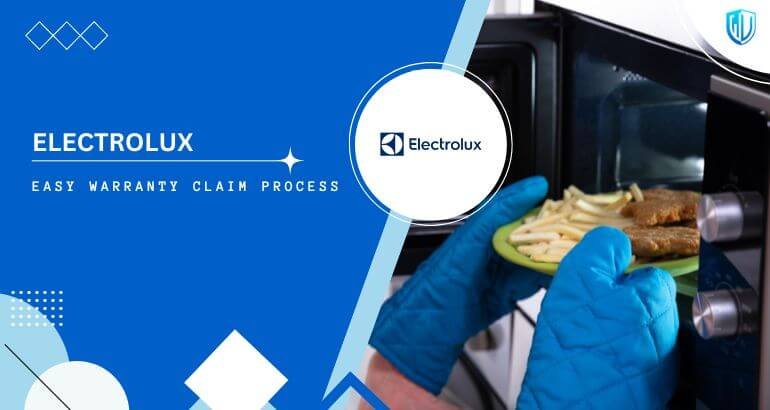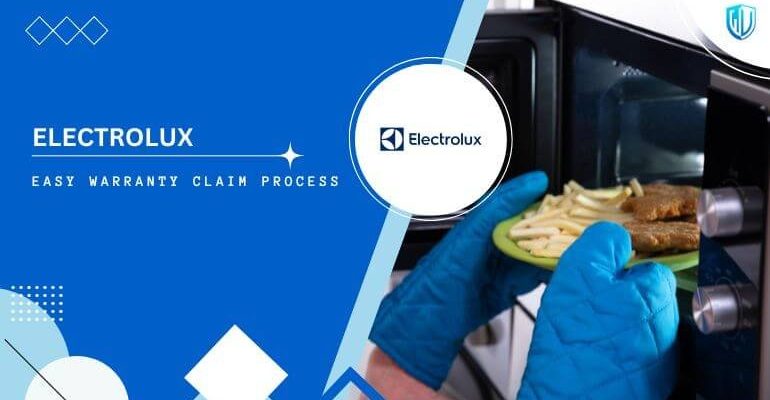
Let’s break down how this works, step by step. Think of it like following a recipe: as long as you use the right ingredients and double-check your measurements, there’s a great chance you’ll end up with what you want—a fixed appliance, at no extra cost. Whether your dishwasher stopped syncing with your smart home or your fridge won’t reset no matter how many times you try, this guide walks you through the entire Electrolux warranty claim process, in plain English.
What Does the Electrolux Appliance Warranty Cover?
Before you start gathering paperwork or dialing support, it’s smart to understand what the Electrolux warranty actually gets you. Think of the warranty as a kind of safety net—it’s there to catch you if your appliance fails due to a manufacturer’s error, not because you accidentally dropped your blender or tried to “fix” the code with a butter knife.
Most new Electrolux kitchen appliances come with a standard limited warranty. This typically covers parts and labor for a set period (often one or two years) after your purchase date. During this time, if your appliance suddenly won’t pair with its app, the heating element fizzles, or the control panel refuses to reset, Electrolux should repair or replace it for free—as long as the issue isn’t due to misuse, lack of cleaning, or acts of nature (like flooding or lightning).
Warranties usually don’t cover consumables or accessories. So if your dishwasher’s battery-powered remote control just stops working, that’s not usually covered. But if the main unit’s electronics fail, that’s a different story. Always check the warranty booklet that came with your appliance—think of it like the treasure map to free repairs.
How To Find Out If Your Appliance Is Still Under Warranty
You might be wondering, “How do I even know if my appliance still qualifies for a free fix?” There are a couple of ways to figure this out before you start troubleshooting or call Electrolux support.
- Check your purchase date: Start by looking for your original receipt or order confirmation. Warranties start from the day you buy the appliance, not the day you install it or first use it.
- Find your model and serial number: These are usually printed on a sticker inside the door, on the back, or underneath the appliance. Grab a flashlight and play detective—it’s worth it.
- Read the warranty booklet: This little booklet explains exactly how long your warranty lasts for parts, labor, and specific items (like compressors or control boards).
- Visit the Electrolux website: Some regions let you enter your serial number on their site to check warranty status or register your product for easier claims in the future.
Don’t have your paperwork? Don’t panic yet. Electrolux support can sometimes look up your warranty based on your serial number, especially if you’ve registered the product online. Still, it’s always easier if you have proof of purchase handy.
Step-By-Step: How To Claim Your Electrolux Warranty
Alright, here’s the meat and potatoes: actually making the warranty claim. The process is less like solving a puzzle and more like following a recipe. Here’s how it usually goes:
- Gather your documents: You’ll need your appliance’s model and serial number, a proof of purchase (like a receipt), and a clear description of what’s wrong. Take a photo of any error codes, blinking lights, or physical damage.
- Contact Electrolux customer support: You can call their official helpline or use the website’s service request form. Be ready to explain the problem clearly—don’t just say “my oven doesn’t work,” but mention if it won’t heat, displays a specific code, or won’t pair with the remote.
- Follow their troubleshooting steps: Sometimes, support will ask you to try basic resets or syncing steps, like unplugging the appliance or checking the battery in your remote. It’s not just busywork—it helps rule out simple fixes and speeds up your claim.
- Schedule a service visit: If support confirms it’s a warranty issue, they’ll arrange for an authorized technician to visit your home and repair, reset, or replace the faulty part.
Make sure you’re available during the time slot, and keep your paperwork handy for the technician. It’s a little like waiting for a pizza delivery—you want to be ready when they arrive.
Mostly, the process is smooth, but being organized makes it even easier. Skip the headaches by having all your info ready from the start.
What To Do If Your Claim Is Denied
Sometimes, you might hit a bump in the road—maybe Electrolux says your warranty is expired, or the problem isn’t covered. Honestly, it’s frustrating, but it doesn’t always mean you’re out of luck.
First, ask for a clear explanation. If the denial was because of missing documents, see if you can provide what’s needed. If it’s a coverage issue, read your warranty terms again—sometimes, certain parts (like the compressor) have separate, longer coverage.
If you genuinely feel your claim should be approved, don’t be afraid to politely push back or ask for a supervisor. Companies know mistakes happen, and a second opinion can help. If there’s no way forward with Electrolux, you can try third-party repair, or—if you paid with a credit card—see whether your card offers purchase protection. It’s not the same as a warranty, but it’s worth checking out.
Tips For Making Your Warranty Claim Smoother
A little preparation goes a long way. If you want the warranty process to feel less like a root canal and more like a quick oil change, here are a few tips:
- Register your appliance early: Doing this on the Electrolux site right after buying your kitchen appliance speeds up future claims.
- Keep receipts in an easy-to-find place: A dedicated folder (digital or paper) makes all the difference when you need it.
- Take photos of the appliance and issue: Clear evidence of the problem, including error codes, helps support troubleshoot faster.
- Write down any troubleshooting steps you’ve tried: If you’ve already attempted a reset or checked the battery in your smart remote, let them know—it shows you’re not just guessing.
The more details you give upfront, the less time you’ll spend on the phone (or waiting for emails to sync).
Trust me, these small steps pay off if your appliance ever hits a snag.
Common Warranty Issues With Electrolux Kitchen Appliances
You might be curious about what usually goes wrong with Electrolux appliances and triggers a warranty claim. In my experience, the most common issues include electronic glitches, temperature control failures, and code errors that make your appliance stubbornly refuse to work or pair with its smart remote.
Sometimes, it’s something simple like a panel not responding, or the appliance refusing to reset even when you follow every step in the manual. Other times, you’ll see flashing lights or cryptic codes that make you feel like you need a decoder ring. Most of these issues are covered under warranty, as long as you haven’t tried to open the appliance yourself or caused damage through misuse.
And don’t forget: accessories (like extra racks or battery-powered remotes) usually aren’t covered unless they’re part of the main electronics. Always check the specifics, because small print can make a big difference.
When To Consider Professional Repair or Replacement
If your warranty claim is denied or expired, you still have options. You might want to compare the cost of professional repair with simply buying a replacement. Here’s the thing: sometimes a minor issue (like a sync error) can be fixed cheaply, while bigger problems (like a compressor failure) mean it’s time to start shopping for a new appliance.
It’s always smart to get a quote from an authorized technician first. They know the ins and outs of Electrolux appliances and can tell you if a fix is practical. On the other hand, if your fridge or oven is over a decade old, even the best “reset” won’t buy it much more time.
Some folks try universal replacements or cheaper third-party repairs, but be cautious—using non-authorized parts or technicians could void any remaining warranty or cause bigger problems with syncing and pairing.
What Sets Electrolux Warranty Apart From Other Brands?
Let me explain: not all warranties are created equal. Electrolux is known for strong customer support, and their authorized repair network is pretty wide, especially compared to smaller brands. The warranty process is straightforward, with clear steps and accessible support staff.
Some competing brands use more fine print or limit what’s covered, or they make you jump through extra hoops to claim. Electrolux, in most cases, is committed to a fast, reliable repair—so you’re not left washing dishes by hand for weeks or struggling to find someone to reset your appliance’s code.
Choosing a brand with a reputable warranty, like Electrolux, is worth it. Appliances are expensive, and a good safety net means one less thing to stress about in your kitchen.
Final Thoughts on Claiming an Electrolux Appliance Warranty
Dealing with a broken kitchen appliance is nobody’s idea of fun, but claiming a warranty with Electrolux doesn’t have to be a headache. As long as you keep your paperwork handy and follow the steps, most claims are resolved pretty smoothly. Remember to check your coverage, gather your info, and don’t be shy about providing details—even if it means explaining that the code wouldn’t reset, the remote wouldn’t pair, or the troubleshooting steps just didn’t do the trick. At the end of the day, warranties exist to make your life easier, not harder. With a little patience and the right approach, you’ll have your kitchen back in action in no time—no decoder ring required.
